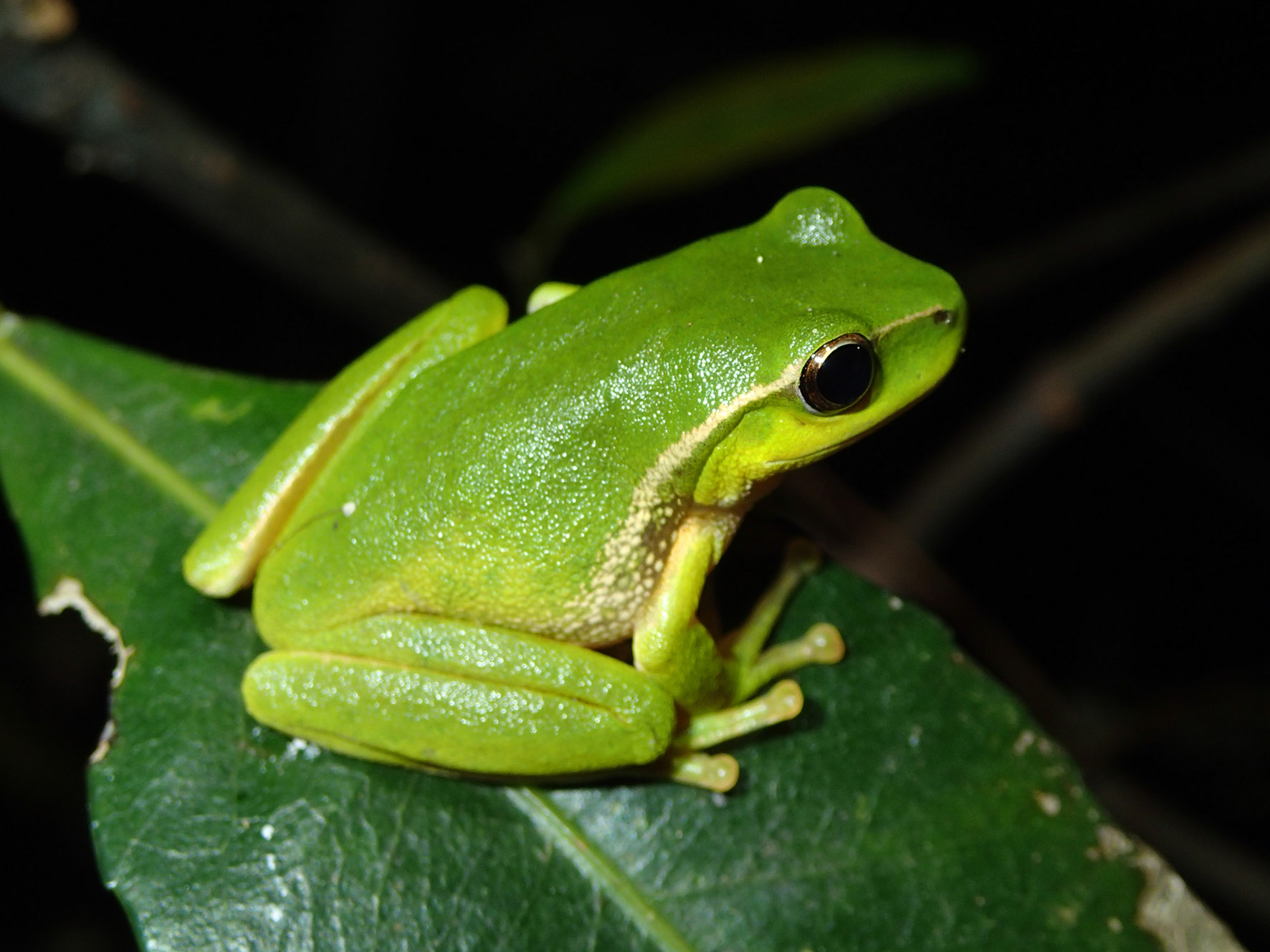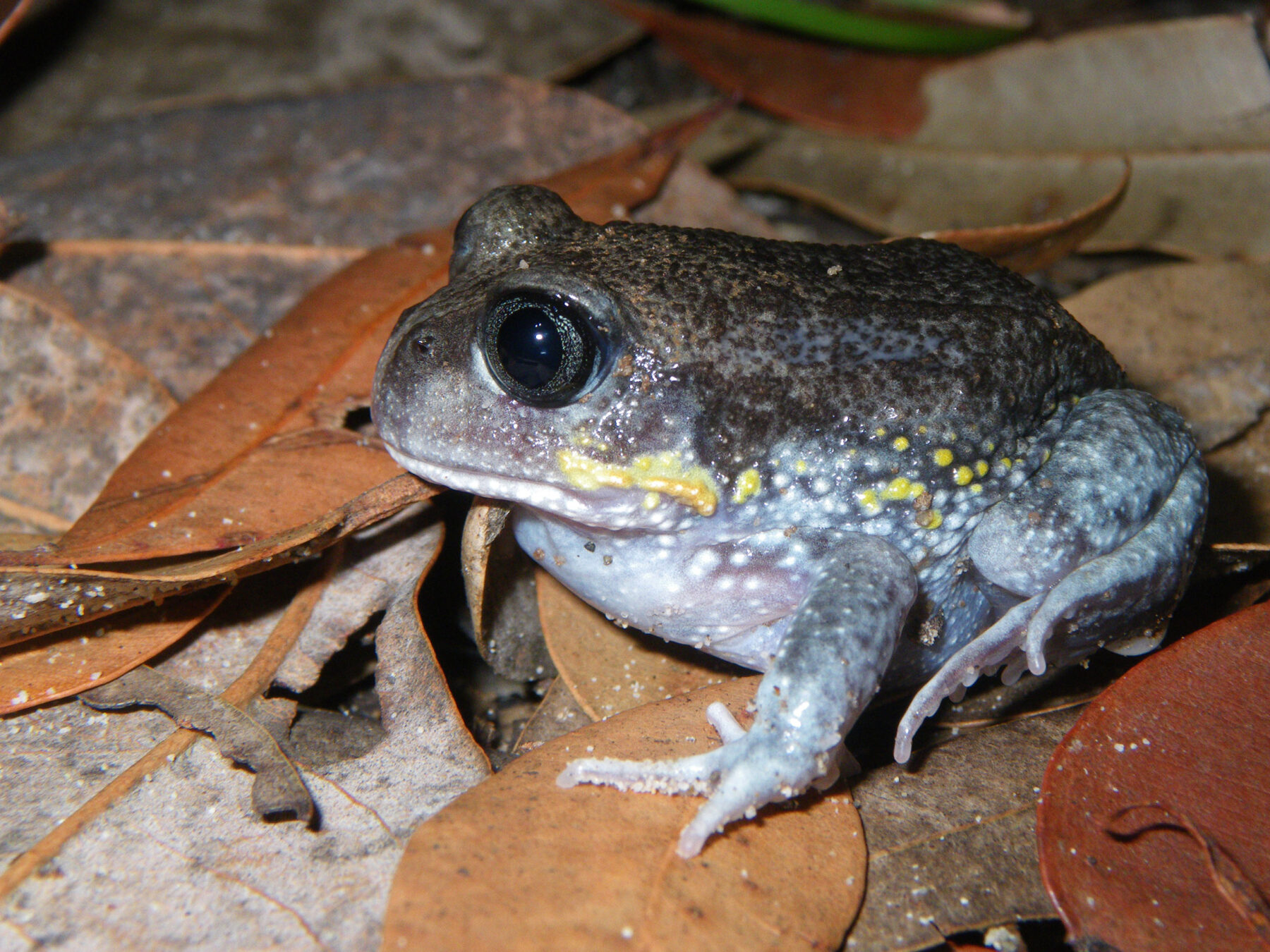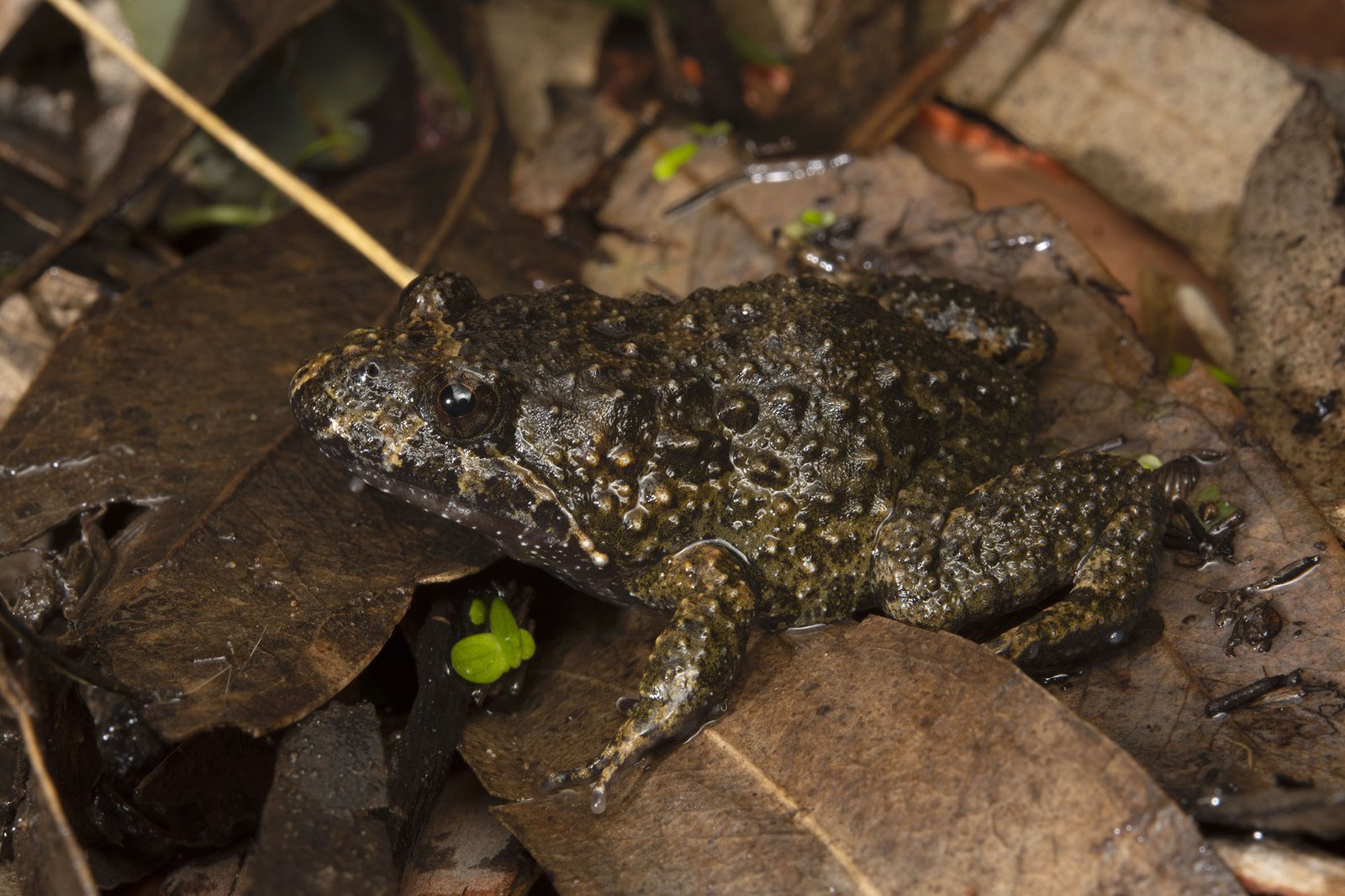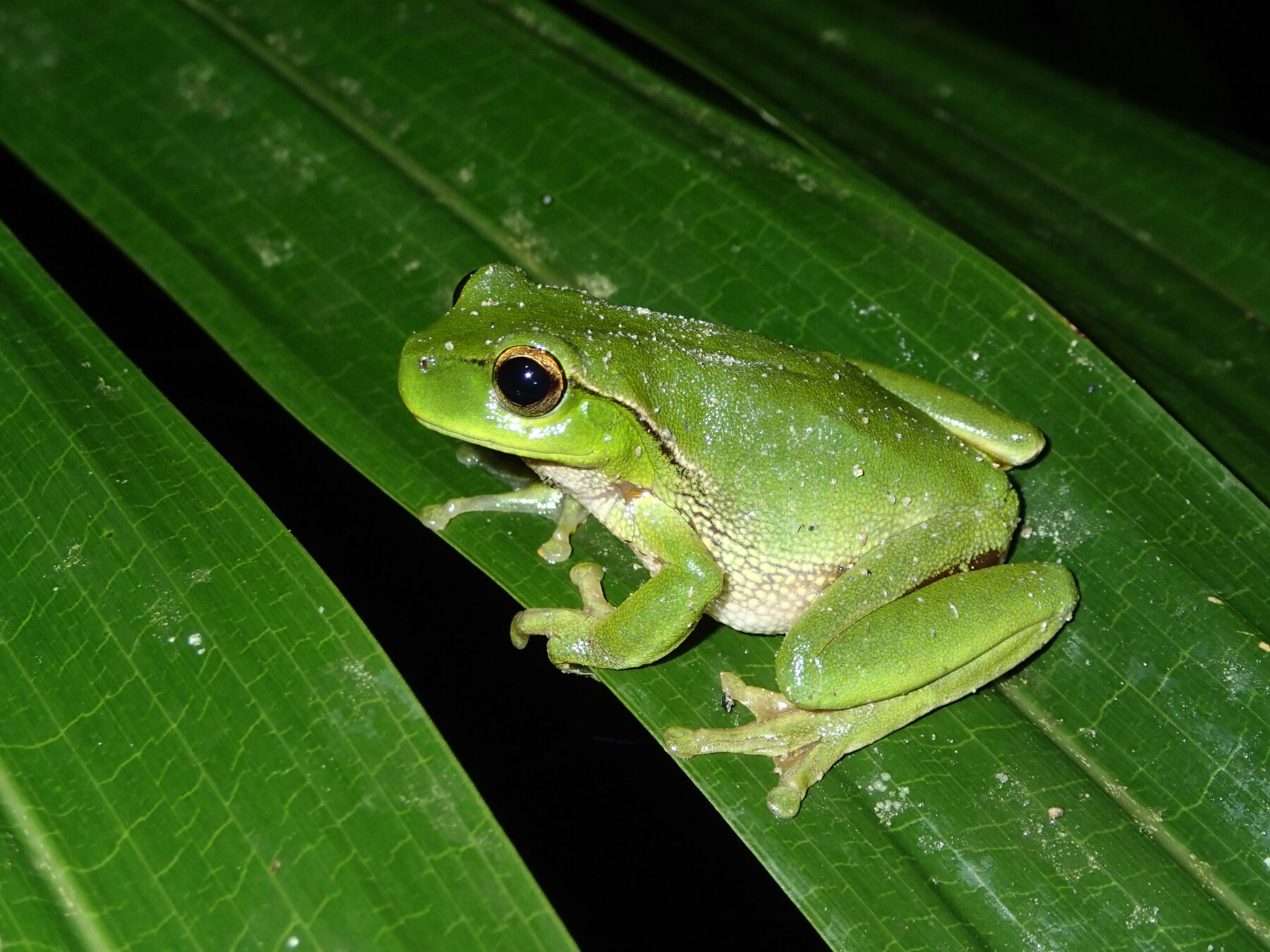Heed the call of frogs

This article is brought to you by the Australian Museum.
Let’s face it. Too many of us know very little about frogs. We might notice one croaking in a drainpipe, in the garden, or out in the bush now and then after it rains. But we don’t really notice them or understand them, and if we do see one, it’s highly likely that we wouldn’t have a clue what species of frog it was. Is it a striped rocket frog? Or a green tree frog? A bleating, moaning, humming or barking frog? Then there’s the motorbike frog, wrinkled toadlet, stuttering, and trilling frogs.
In fact, Australia has 249 known species of frog, almost all of which are found nowhere else in the world. Some species, like the striped marsh frog are flourishing, but the numbers of others have been declining for four decades or so, due to habitat loss, disease and climate change.
Sadly, at least four species of frogs found in Australia are now extinct and one in five existing species are on the brink. Frogs are a key indicator of the health of our waterways and wetlands and they play a crucial role in several ecosystems.
Now is the the time to begin a love affair with frogs, by being a part of FrogID Week.
Up for the count with FrogID
FrogID Week is a national citizen science project, owned and managed by the Australian Museum. Australia does not have enough frog scientists or specialist biologists to study frog populations alone. Australia is huge, which means many potentially significant locations cannot be reached in time after rainfall. Enter the cavalry… the citizen scientists of Australia – that’s you and your family.
This important project helps scientists and land managers to learn more about what is happening to Australia’s frogs. Dr Jodi Rowley, Lead Scientist of FrogID, says “People right across Australia have become part of the mission to help better understand and conserve frogs using the FrogID app to record frog calls. Since our launch in 2017, together we’ve changed the face of frog conservation across Australia, producing more than 20 scientific publications and literally putting frogs on the map across Australia.
“We’ve helped discover frog species new to science, built up the FrogID database to include 88 per cent of all known Australian species, and found some in areas we’d previously thought they had disappeared from!
“But there are still gaps: in the Top End, the far southwestern point of Western Australia, and remote parts of South Australia to name a few. And we’re still looking for the missing Peppered Tree Frog on the New England Tablelands of New South Wales and a rare sub-species of the Giant Burrowing Frog from south of Sydney, too. We hope as we count down to one million frog recordings, one of our citizen scientists will discover these.”
The time is now
Most of Australia’s frog species are active in November – that’s why FrogID Week is held in this month as it is the best time to record as many calls as possible.
In 2023, FrogID Week will run from 3-12 November. It is hoped that the numbers of calls recorded will continue to rise, as they did in 2021 and 2022. The last two years were particularly successful, seeing a more than double year-on-year increase in FrogID app downloads. This year, Dr Rowley and her team want more people in regional areas of Australia to ‘jump’ on board, as many of these areas have no frog calls recorded. Having data on which frogs live in which region, is a source of vital information to help frog conservation in Australia.
If you live in a regional area, you can help our tailless amphibian friends!
What do you have to do? It is easy. Just download the free FrogID app on your smartphone, register an account and record as many frog calls as you can. A dedicated team of experts at the Australian Museum will then review your recording and identify the species for you.
This innovative and free FrogID app relies on frog calls to identify species as each frog has a unique sound. It is quite ingenious, as it is very difficult to tell a frog species by appearance, and it is also quite intrusive to go clumping through a frog’s habitat to get close enough to see or photograph it. This way, you just need to record the croak, chirrup or ribbit of a frog in your area. Each recording is time-stamped and geo-referenced to provide very specific data, and help scientists to understand and conserve Australia’s unique frog species.
Hop to it
The first thing to do is go to the FrogID website and download the free FrogID mobile app. Have a look at it and use the ‘Near Me’ filter on the app to learn more about local frog species, their habitats, and breeding patterns. This will help you understand what sort of frogs might be in your neighbourhood.
Then head out and explore your nearest creek, water source or wetland, and record and submit frog calls using the ‘Record’ section of the app. You can submit them anywhere, anytime, without needing to get too close or disturb their habitat.
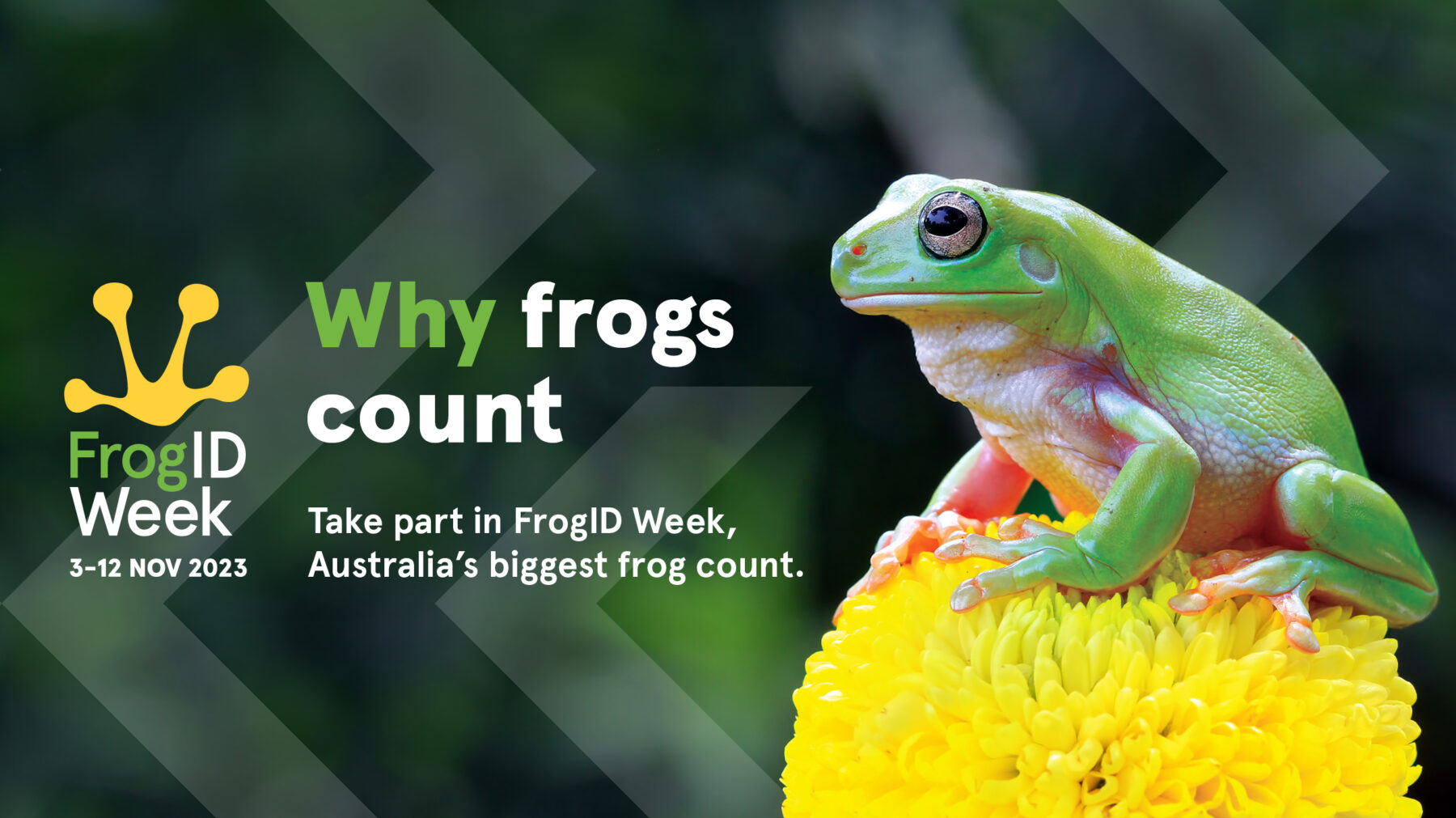
Kids love frogs, so this is a wonderful opportunity for the whole family to get involved. Together you can explore frog habitats, record their sounds, submit them, and then be happy that you and your family have played a part in helping with frog conservation. And because frogs are such great indicators of environmental health, being highly sensitive to their surroundings, each FrogID submission provides insights into the overall health of our environment.
A positive, strong, and vital message for the adults of the future.
Download the app today.
This article was brought to you by the Australian Museum.
